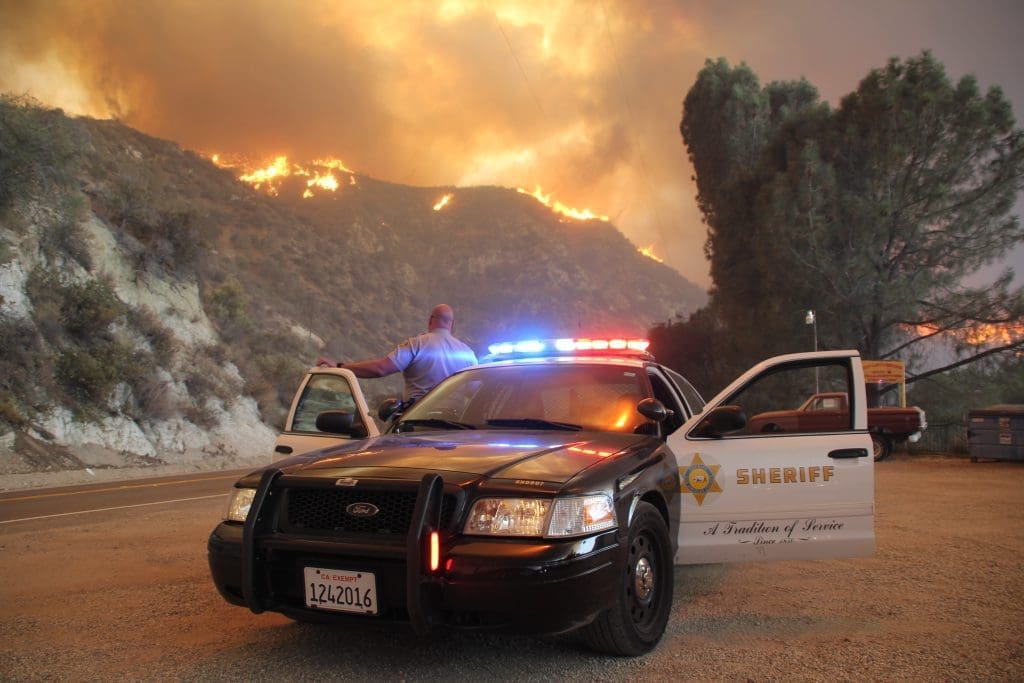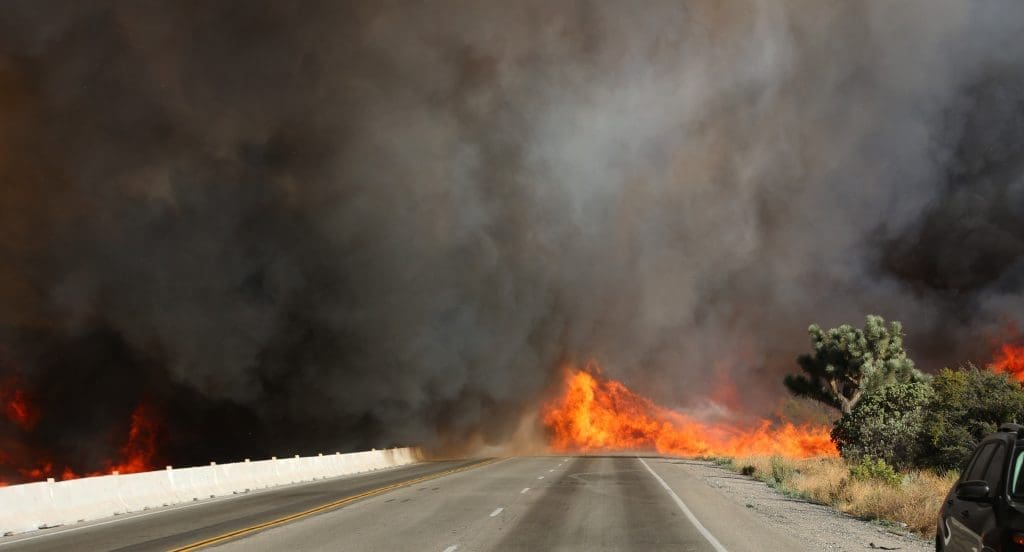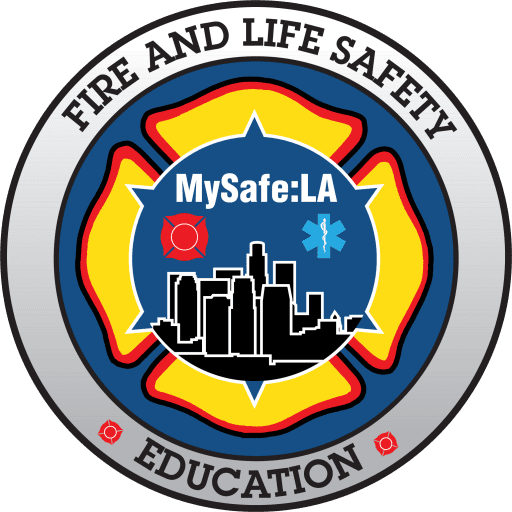Let's GO!
When a wildfire approaches, it’s time to take action. Be ready to GO when fire or police officials declare an evacuation order. But know that GO may mean you STAY and shelter in place. The key is to take the appropriate action.
Before you evacuate
Your evacuation checklist will help you ensure the right things are in your vehicle when it’s time to leave. And make certain you consider these important issues:
Where to go
Plan to travel to a safe, low risk area. Sometimes that means driving for awhile, and consider an evacuation center as a first step, or a friend’s home that is far away from the fire. If you need a hotel, that’s an option, but be certain it isn’t in the path of the fire.
How to get there
If you have Internet connectivity, you can use the maps function in your smartphone. It might be wise to have a paper map of your community, in case there is no Internet or cell service.
What to take
Assemble your emergency supply kit as part of your READY plans – before a wildfire occurs. Don’t forget to include a plan for your pets as well.
- Ensure you have your evacuation checklist - and review it
- Make certain your GO bag is in your vehicle
- Make certain everyone is wearing proper clothing - long pants, long sleeve shirts, hiking shoes or boots, a baseball cap, a bandanna for face over - or an N95 mask, goggles or glasses.
- Bring your pets - and put them in a crate container in your vehicle, if possible
Don't Wait. GO!
Every wildfire is different, and you cannot count on a specific, single evacuation route when the fire gets close. So, if you’re worried about having to evacuate, don’t wait – do it. Remember: ensure you’re connected to live, up-to-the-minute information from radio or the Internet. Have a hand-cranked radio and your smartphone handy.
Leaving early is not only important for you, it’s important for firefighters. If the roads are jammed with vehicles, they can’t get into the fire zone to defend homes.



How do evacuations work?
- Fire officials will map out not only where a wildfire is burning, but where it is headed. They’ll look at it relative to the coming hour, hours, and as much as a day or two in advance.
- Based on fire behavior, fire and law officials will determine if an area needs to be evacuated. It may be a single street, or an entire neighborhood.
- Although fire officials will typically call for evacuations, local law enforcement typically are responsible for enforcing an evacuation order. If you see police vehicles on your street, it’s likely an evacuation order is under way.
- Fire officials will want to provide you with as much time as possible, but it’s up to you to stay aware of the potentially rapidly changing situation near your home.
- In Los Angeles County, both “voluntary” and “mandatory” evacuation terms are used to describe evacuation orders. These terms (and others) related to the time period involved, and the level of risk to life and property.
- “Fire roads” are for emergency responders, NOT for residents (unless so directed by fire or law officials).
P.A.C.E yourself!
We suggest you remember the term PACE – when it’s time to evacuate. Here’s what that means:
P
Primary
Your primary road or highway that gets you out of your neighborhood.
A
Alternative
A secondary road that is not the typical route you’d follow.
C
Contingency
Think of fire roads, trails, or other “off the beaten path” routes.
E
Emergency
If the fire is upon you, seek an immediate shelter.
The “E” in PACE is only to be considered when there is – in your opinion – an immediate threat to your life or those with you. This is your last resort to take shelter – at this point escaping is no longer an option. We’ve outlined some options to consider below if you become trapped and need to resort to emergency shelter.
Remember!
Leaving early will keep your PACE options to “P” or “A” – and by leaving early, you will reduce the stress on you, your family, and your pets.
Drive carefully
- Ensure your vehicle’s headlights are on
- Don’t drive through smoke where you can’t see what’s in front of you
- Always yield the right of way to emergency vehicles
- Keep your windows rolled up, and turn on your air conditioner (to recycle air)

If you become trapped...
No evacuation or shelter in place order is perfect. The better prepared you are, the less likely you’ll encounter a bad situation. Even so, it’s important to be prepared, so keep these tips in mind should you become trapped:
In your home
- Stay calm – keep the family and pets together
- Call 911 if you are able – tell them your situation
- Fill sinks and tubs with water – and have buckets of water handy
- Keep doors and windows closed, but unlocked
- Keep wet towels and place them at the foot of doorways
- Stay away from the exterior walls and windows of your home
In your vehicle
- Stay calm – try to park away from vegetation, or the middle of the road
- Call 911 if you are able – tell them your situation
- Keep all vehicle doors and windows closed
- Use your bandanna or mask to protect your nose and mouth
- Cover yourself with a wool blanket or jacket
- Lie on the floor of the vehicle if you can
On foot
- Stay calm – try to find a ditch or a depression in the ground
- Call 911 if you are able – tell them your situation
- Use your bandanna or mask to protect your nose and mouth
- Cover yourself with a wool blanket or jacket
- Use your smartphone’s “rescue me” feature if it has one
- Learn what TRA means and how to take advantage, if required
TRA
TRA means Temporary Refuge Areas. These are areas to go to in the event your PACE plan doesn’t work or you’re unable to evacuate and “E” (Emergency) is your immediate option. A good TSRA will likely be the lowest point (elevation) in your area. A gully next to a road is one good example. Fire and heat tend to move uphill, away from low lying areas. And wildfires move quickly, so you are unlikely to need to use a TRA for long. Use the “On Foot” options listed on this page. Note that firefighters always identify a possible TRA before deploying to a specific area to fight wildfires or defend structures.
If you find yourself to have no way out – then sheltering in your home may be the best option. Maintaining a hardened home and defensible space is your responsibility, and when ensuring your home is protected, consider steps you may take in case you must shelter inside your home.
Sheltering In Place (SIP)
In some situations, it may be safer for you to shelter in place. This is not a decision you should make on your own. Sheltering in place has been successfully implemented in Australia, the United States, and even here in Southern California. To be successful, the homes in the community must be at least reasonably protected from the fire front – hardened homes.
We’re sharing this information because these terms are used widely, and you may have heard this is a good option. Only fire officials can tell you if it’s the best strategy. Your primary objective is to get out of harm’s way. That’s why we suggest that you evacuate early. Once you’re out of the area, you and your family will be safe. You can’t replace your life. GO!

Are You Ready to GO?
Join our wildfire updates
Stay up-to-date with Wildfire:LA activities!


